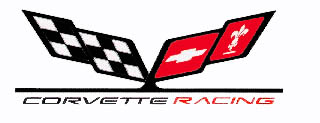|
DETROIT (November 4, 1998) - Given the overwhelmingly positive reception and continuing sales success of the fifth-generation Corvette, it’s reasonable to ask: "Why is it being raced?" The answer, while it has its roots in the past, is almost entirely focused on the future -- and on the remarkable breakthrough in high-performance technology found under the hood of every C5 Corvette. "Until the introduction of the LS1 in the C5 Corvette, almost every V8 engine used for high performance or for racing dated back to designs that originated in the mid-1950s," said Herb Fishel, director of GM Motorsports. "The most famous example is the small-block Chevy. First introduced in 1955, millions have been built and can be found powering everything from production cars and trucks to the cars and trucks raced at just about every racetrack across North America. "But now, with the introduction of the C5’s LS1, General Motors will begin to phase out the small-block Chevy that has been the backbone of America’s high-performance and racing industry for more than 40 years," continued Fishel. "It will be replaced by derivatives of the LS1, which has the highest specific output of any production V8 engine GM has ever built. In every sense the LS1 is truly the high-performance engine of the future." "Few people yet realize the long-term effect that the C5 LS1 engine is going to have on the performance industry," says Joe Negri, manager of IRL and Road Racing Groups for developing the C5-R racing version of the LS1. "What is really remarkable is that the very high specific output of the production Corvette’s LS1 engine has been achieved at reasonable cost and weight while meeting both emission and fuel economy standards. It is a fantastic engine on which to base a modern-day racing program." The blocks themselves are run down the production casting line. Water pumps and alternators come right off the parts shelf. Even the same analysis tools were used in developing the race engines. According to GM Motorsports engine specialist Ron Sperry, "We wanted to do this engine using as many production parts and processes as possible. In order to get to our performance targets, we found we had to modify our existing (production) design, so we went back to our production people who had some block configurations they were studying for future product, and they made some of these available to us." "The cylinder heads were generated from the same 3D data files used for the stock heads, but valve angles were rolled and the combustion chamber was redesigned to match up to the racing engine's bigger bore," continues Sperry. "But, externally, they look like the production heads." One benefit of developing the race engines in-house using production-based parts, is that it allows GM engineers to work with aftermarket suppliers to develop performance parts for the engines. Down the road, GM plans to offer more and more GM Performance Parts for the new GEN III family of small block engines. Looking towards the 21st century, the Corvette engine development team saw that performance – and racing – would not be and could not be about new records and ever-increasing speeds. Instead the emphasis would be on new designs that produced engines that are fuel, weight and emissions efficient, cost effective, and socially and environmentally acceptable; engines where electronics and dramatically improved cooling, oiling and sealing systems made significant contributions to increased performance. "In the 1970s and 1980s the manufacturers and the performance industry were on divergent paths," says Herb Fishel. "For most of the ‘70s and ‘80s, the manufacturers’ focus was on fuel economy and emissions. "It was left mostly to aftermarket suppliers to develop performance components for small-block V8s. This led to the cost of racing engines, for example, increasing dramatically, since the performance was being added on to an aging design rather than being built in to a modern design." "It’s fitting that this new design of engine was introduced in the C5 Corvette," says Negri. "It was Zora Duntov’s vision in 1953 that Corvette should lead the way with ‘ready-engineered’ parts and designs. And I think he would be proud of what has been achieved with the LS1. "It is the leading edge of V8 technology as we enter
the 21st century. And there’s absolutely no question that a good portion
of racing in the 21st century is going to be built around the engine that the
world first saw in the C5 Corvette." |
